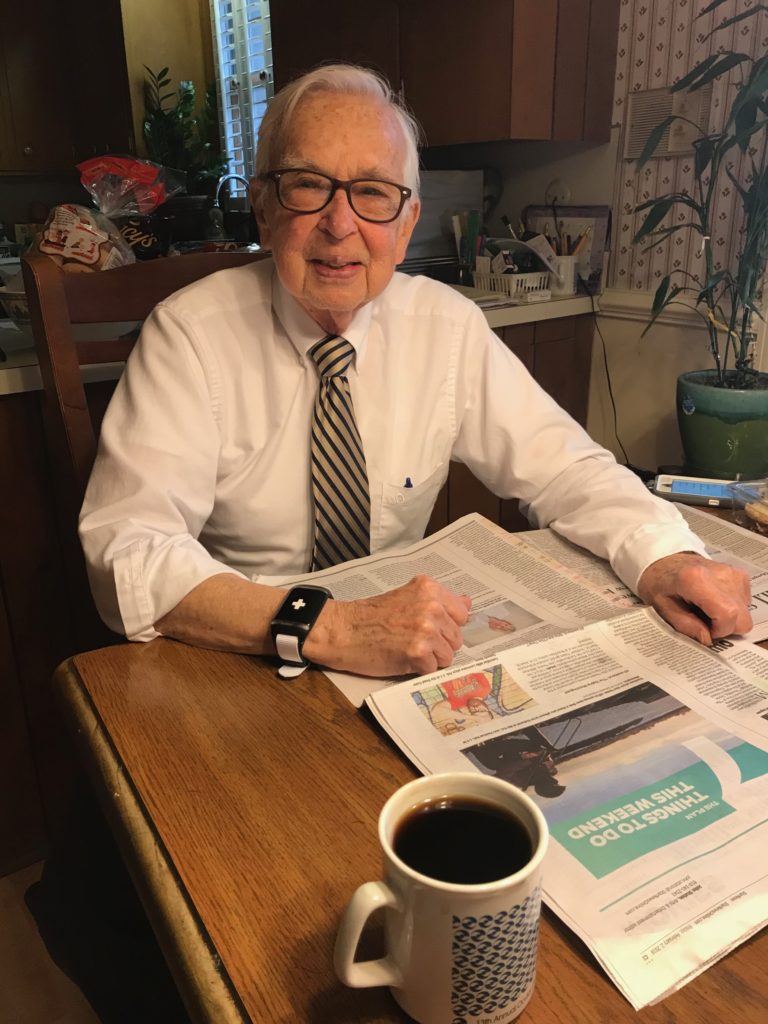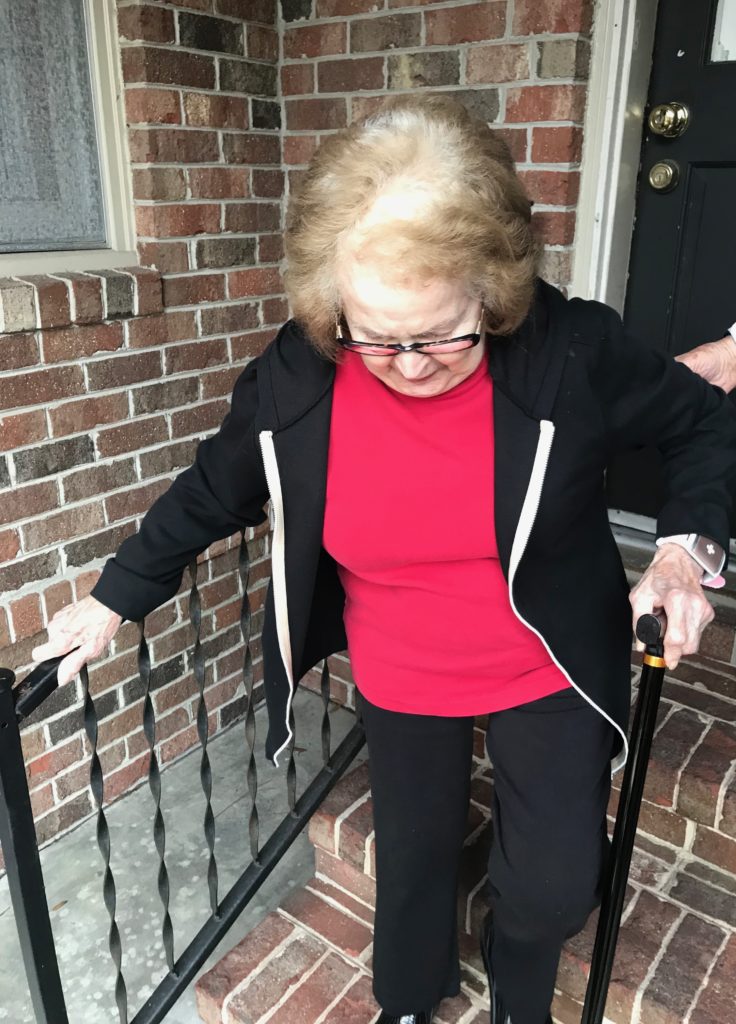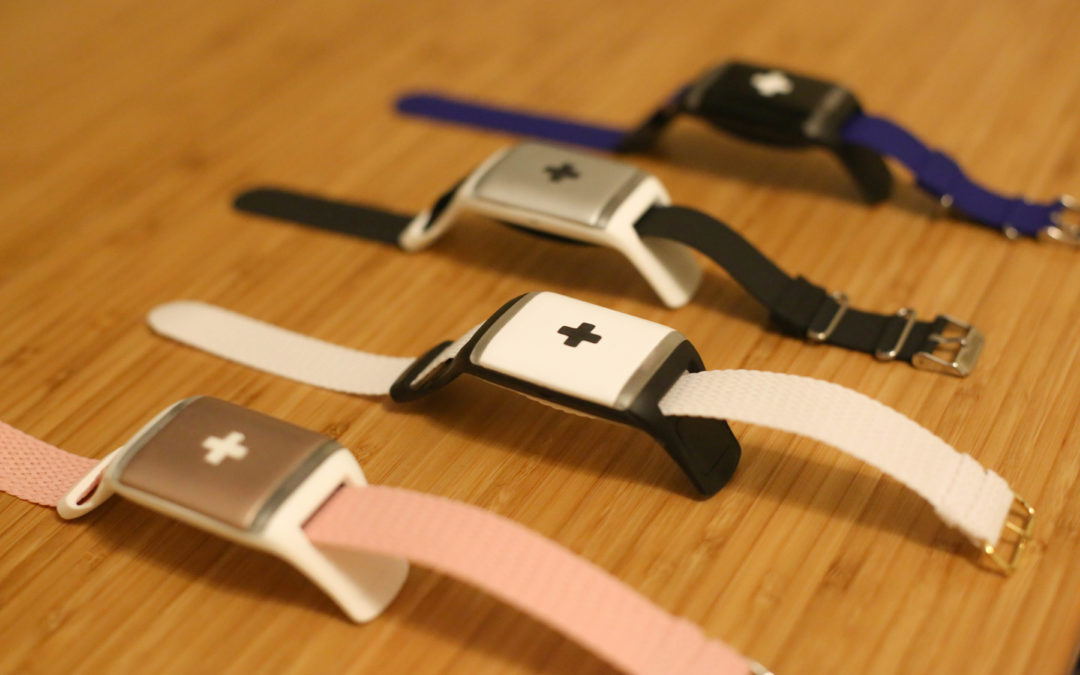Of the 6 million seniors living in the U.S. with Dementia and Alzheimer’s, more than 60 percent suffer from one of its most common and frightening symptoms: wandering. Given the disorientation and confusion that comes with the disease, those that wander away from caregivers put themselves in harm’s way.
Recently, wearables have become an increasingly popular tool for monitoring those who end up lost, and can be the difference between life and death. However, current market wearables rely on RFID, WiFi, and cellular data—technologies susceptible to interruptions or outages.
Enter Adam Sobol, CEO and Founder of Chicago-based Internet-of-Things wearable technology company, CareBand. Using Comcast’s machineQ network, Sobol’s IoT wristband is being tested in Chicago and Indiana based assisted living facilities. In this issue of Catalyst, we partner with Comcast to highlight the life-saving potential of CareBand, and how it is utilizing the machineQ network to improve the quality of life for seniors living with memory loss.
How one device can help manage people living with Alzheimer’s and dementia?
Four years ago, Kevin Matthew, a 67-year-old military vet who lives with frontotemporal dementia, wandered away from his townhome in northern California, hopped on a bus, and ended up at a barbershop two towns over where he asked for his regular cut.
Meanwhile, back home, his wife Jackie was beginning to panic. Where had Kevin wandered to this time? Would he be able to find his way back home? Could he remember their address? Without hesitation, she called the police and a few hours later, Kevin was found in a nearby park, alone, confused, and moneyless.
Stories like this are not uncommon. Most people who live with dementia are bound to wander away at some point or another. It’s one of the most common symptoms after all: more than 60 percent of those living with Alzheimer’s or dementia will wander.
However, most people are not as lucky as Jackie and Kevin. Due to the confusion and disorientation that comes with the disease, it’s often too difficult for people with dementia to ask for help or find their way back home. This is, unfortunately, why if they’re not found within 24 hours, chances are they’ve suffered from a serious injury – or, worse, death.
While certain measures can protect people living with dementia who wander – such as not leaving people with Alzheimer’s or dementia unsupervised, or installing deadbolts – over the past few years, wearables have become an increasingly popular tool for monitoring those who tend to end up lost, and can be the difference between life and death.
The need for more reliable trackers 
Most of the “dementia trackers” on the market aren’t entirely foolproof — which is something Adam Sobol, the CEO and Founder of the IoT wearable technology company CareBand, noticed back in 2014 when he first came up with the idea for a device he also calls “CareBand,” which combines cutting-edge location tracking with activity monitoring technologies.
The trackers Sobol saw on the shelf relied exclusively on RFID readers or WiFi availability indoors and access to cellular data outside – all of which can be a major issue if and when service drops or becomes spotty during a crisis. Not to mention, most assisted living facilities, many of which were built years ago, don’t have WiFi infrastructure or strong cellular service. Nor do seniors living at home.
That’s why Sobol started looking for a different type of wireless technology that could reliably power a location-tracking device – something he deemed crucial for dealing with the unpredictable behavior of people with dementia.
Fast forward to 2016 when Sobol came across the golden ticket: machineQ™ Comcast’s B2B Internet of Things (IoT) service.
The power of a cloud-based solution
machineQ™ is a secure, scalable, cloud-based IoT enablement platform offering fully integrated gateway and device management, monitoring, and services for the enterprise.
The machineQ IoT service allowed Sobol to do what other trackers could not. By sending and receiving small amounts of data through LPWAN (low-power wide-area network)-compatible sensors worn by people with Alzheimer’s and dementia, machineQ enables CareBand to monitor their locations, even across wide geographies and in dense city environments. The machineQ platform even allows Sobol to pinpoint participants’ locations down to a room inside a building within a three-mile radius.
“Comcast’s machineQ IoT service allowed Sobol to do what other trackers could not.”
And so, with Comcast’s machineQ on board, Sobol designed a product that could precisely pinpoint a user’s location on a map or floor plan in real-time.
Working with the machineq platform, CareBand’s final dashboard looks and functions similarly to Google Maps and Uber – you can follow the users’ paths in real time to determine where they left from and where they’re headed. And as soon as a person walks outside of a designated geo-fence, an alert will trigger and notify their caregivers of the change in location.
Empowering care providers to detect a change in condition
Sobol wasn’t finished with the device, though. Now that he had a way to keep CareBand connected 24/7 through machineQ, he wanted a tool that could track and collect advanced analytics and insights on users’ daily activities.
Having grown up surrounded by a family of doctors, Sobol wanted to find a way to use this information to help doctors and care providers better understand the behavior of people with dementia. He consulted with his father, Dr. Todd Sobol, MD, CMD, a geriatrician in Ohio, to learn how he could provide the right value to the right people at the right time.
As a result of this father-son partnership, the tracking device is now able to detect early changes in condition and health complications by monitoring behaviors like bathroom utilization along with exercise, sleep, and eating patterns. The device creates daily activity reports to help caregivers track irregularities.
For example, if a person starts to take frequent trips to the bathroom, CareBand will alert caregivers that they may be at risk for a urinary track infection (UTI) long before they spike a fever and end up in the emergency room.
Helping researchers understand the disease
Looking forward, Sobol hopes the analytics reports will not only help caregivers understand how to be more proactive about how to care for people living with dementia or loved ones, but also to help researchers better understand the disease.
“We’re collecting a lot of data from devices to not only avoid unnecessary hospitalizations,” Sobol said, “but to also, hopefully, work with researchers to find cures or ways to identify when their health is declining.”
According to Sobol, understanding behaviors patterns may lead to advancements in dementia treatment. Additionally, current ways to collect data on this population are done through intensive manual techniques. Sobol hopes CareBand could shed light on this, and, consequently, help doctors find a cure.
“There is a significant opportunity for pharmacologic research from the passive data collected to be able to study the efficacy of medications such as anti-depressants or anti-psychotics on this population.”
Looking at the future of dementia care
Currently, CareBand is being tested at a few Chicago- and Indiana based assisted living facilities. This summer, Sobol and his the team will begin manufacturing and selling the product at large. And when they do, Sobol expects that CareBand will sell for about a third of the price of other wandering solutions, due to machineQ’s flexible infrastructure and lower power requirements.
 Sobol expects the device to make a notable impact across the entire continuum of care – from people living at home to people living in assisted living facilities and people who reside in skilled nursing facilities.
Sobol expects the device to make a notable impact across the entire continuum of care – from people living at home to people living in assisted living facilities and people who reside in skilled nursing facilities.
Seeing that Comcast is already available in more than 15 major US metros including Chicago, CareBand now has access to the network necessary to reach and enhance the quality of life of approximately 20 million seniors living with some degree of memory loss — a scalable solution that’s needed now more than ever.
There are already six million seniors in the U.S. living with dementia, and that number is expected to triple by 2050. With a limited number of senior living facilities and caregivers, we could be heading toward a crisis.
There is an imminent need for a solution to help understand and manage the symptoms of dementia at such a large scale, and Sobol hopes CareBand will be a part of it.
APPLY TO GROW YOUR INNOVATION TECHNOLOGY
 Creating a startup has increasingly become a commonplace career track and an experience that many companies now seek in employees as they strive to fill corporate innovation teams. If you have ever considered becoming an entrepreneur, Chain Reaction Innovations (CRI) can help you do that by providing business planning and technical mentorship, two-years of salary, and up to $220,000 to spend on research work at Argonne National Laboratory.
Creating a startup has increasingly become a commonplace career track and an experience that many companies now seek in employees as they strive to fill corporate innovation teams. If you have ever considered becoming an entrepreneur, Chain Reaction Innovations (CRI) can help you do that by providing business planning and technical mentorship, two-years of salary, and up to $220,000 to spend on research work at Argonne National Laboratory.
Participants in Chain Reaction Innovations receive mentorship from CRI staff as well as entrepreneurship experts in the Chicago innovation ecosystem and mentor partners the Polsky Center at the University of Chicago and the Purdue Foundry at Purdue University. To find out more, watch this video to see and hear how CRI is helping the first cohort of innovators grow their technology.
Watch:
What we’re reading
- Comcast expands its low-cost broadband service to US military veterans [CNET]
- Abbvie donates $100M to Ronald McDonald House Charities [BioSpace]
- Google launches $1M economic impact challenge for Illinois non-profits [Chicago Inno]
- Pinterest moving Chicago office to West Loop [Crain’s]
- Allstate acquires identity protection company for $525M [Coverager]
- University of Illinois announces free tuition for income-qualified students [WGN]
- Senators want answers on Rauner’s proposed South Loop tech campus [Crain’s]
- ComEd to build $58M warehouse and offices in Avondale [The Real Deal Chicago]
- The Midwest’s best-kept secret is its vibrant cybersecurity community [Venture Beat]
- Women-owned firms in Chicago lag U.S. figures [Crain’s]
- Here are all the Chicago companies that were on the Inc. 500 list [Chicago Inno]

